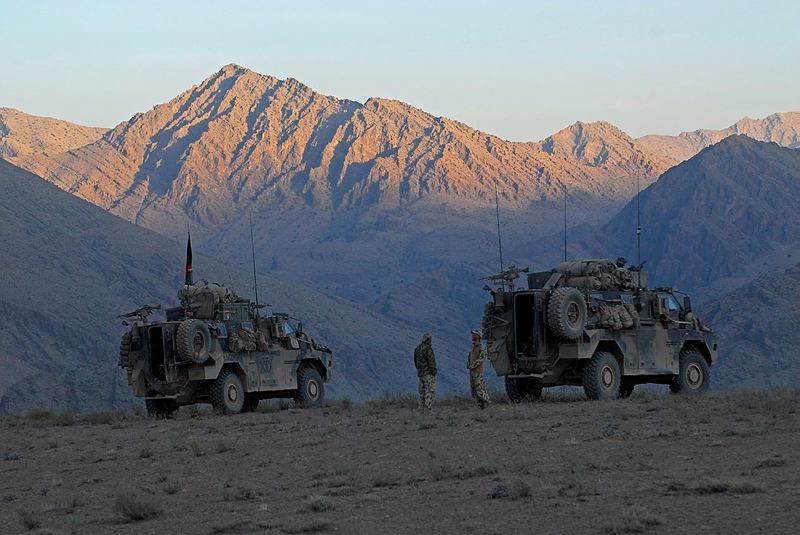
Karl Claxton has done an admirable job
sustaining logical and informed debate on the future of the Australian Army on
The Strategist. His most recent piece,
Armour, Army and Australia’s future strategy corrals a number of different views on the Army and examines them together, which is probably what the debate needs. This discussion is important for the Army and the nation; Army has reached the end of a decade and a half of continuous operations in the Middle East and it’s crucial that the future of the service be discussed thoroughly, if only to stave off a repeat of the 1970s and 80s for the service.
Karl framed
my earlier argument perfectly when he said I was worried that ‘an Army designed to be robust enough to confront any hypothetical future conflict won’t be optimised for the kind of battles it’ll actually have to fight’. I know others, Michael Clifford among them,
disagree with that analysis—that’s just part of healthy debate. But I don’t count myself as one of the ‘armour sceptics’ that Karl alludes to. I like
Ben James’ (the armour insider) argument that LAND 400 is about force protection, not, as Geoffrey Barker
argued, a vanity project being pushed by aggressive Army officers eager to have a ‘heavy expeditionary army’. But then again, as Michael Clifford said, armour and Army is ‘one of the most uniformed policy and capability debates’ currently raging.
Briefly on the topic of armour, Australian soldiers deserve the best in force protection measures and I happen to agree with Michael on the limitations of ‘light’ forces. The Australian Army which went into East Timor in 1999 was a hollow shell of light infantry which completed its mission because, in the words of Peter Cosgrove, ‘
we were lucky’. But the Army of 2015 is a much more powerful instrument of policy, with newer and more lethal weapons, a modular, multi-role structure and—crucially—recent combat experience. The current Army has successively become what Michael called a ‘balanced’ force.
Yet I still don’t think force structure is central to the debate or Army’s future. Important, yes, because the Army hadn’t restructured its higher formations
since Vietnam, but not central. The Army’s role as an instrument of Australian strategic policy is of greater concern, as is the development (or refinement) of Army’s doctrine. Michael argued this debate should be ‘about designing an Army force structure and skill set which offers government the best and broadest set of policy options’. I think that’s backwards—Army derives its force structure and its doctrine from its role as an instrument of national strategy as determined by successive governments. As Peter Layton
said, ‘with a good strategy, Australia will get more out of its force structure’.
Strategically, Australia is a middle power with a global view. Our recent military commitments reflect this by being modest but proportionate, and are the result of the pursuit of individual national interests and wider geo-strategic concerns. For the Army—and the ADF as a whole—this has meant being a junior partner in US led-coalitions in the Middle East. I think that is the lens through which we should examine Army’s future role because the future Army is likely to be operating in a coalition environment. Army has, and will continue to make, relatively small but strategically important military contributions to larger international coalitions.
At a tactical level, Army’s progress in force modernisation and restructuring has not brought about an equivalent transformation in doctrine. Plan Beersheba provides for some development of amphibious capability but is vague on the topic of
amphibious doctrine – Chief of Army, Lieutenant General David Morrison said of amphibious that the Army will ‘learn as we go’. It’s also worth noting that while much focus has been on higher level/operational reorganisation, Army’s operations in Afghanistan and Iraq were conducted at battlegroup and below levels. Army’s on track with updating its higher level structures but actual operations take place at a much lower level, where there’s still room for improvement.
On that track, while debate has been centred on LAND 400, Beersheba and the like, some other important issues may have slipped the net. Deane-Peter Baker asked back in December ‘
can we please talk about the rifles’, in reference to Army’s out-of-date small arms inventory. He raised some good points, namely that while we have abstract debates about major weapons platforms and force structures, Army’s soldiers have to make do with some pretty average pieces of kit. Robert Potter
agrees, saying that there needs to be more debate on this issue so diggers can get the best personal gear available. The Australian rifleman is the Army’s key weapons platform and can always use more investment.
What’s clear in this debate is that there’s a multitude of disparate views and opinions on a wide range of issues and right now the only thing that’s certain is that the debate is going to keep on rolling. But that’s probably what Army needs.
Mitchell Yates is a postgraduate doctoral research student at the University of Western Sydney. Image courtesy of Department of Defence. Print This Post
Print This Post